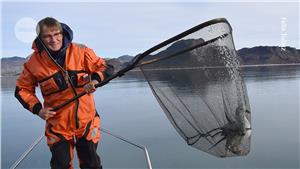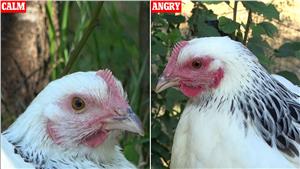The Foods the World Will Lose to Climate Change
Save this storySaveSave this storySave There's no denying it: Farming had a rough year. Extreme weather spun up storms and floods, unseasonal freezes and baking heat waves, and prolonged parching droughts. In parts of the world in 2023, tomato plants didn't flower, the peach crop never came in, and the price of olive oil soared. To be a farmer right now—or an agronomist or an agricultural economist—is to recognize how closely those weird weather events are linked to climate change. In fact, when the United Nations Climate Change Summit, known as COP28, ran in Dubai earlier this month, it featured a 134-country pact to integrate planning for sustainable agriculture into countries' climate road maps. As the agriculture sector looks toward 2024, crop scientists are working to get ahead of ruinously unstable weather. They are envisioning adaptations for both growing systems and plants themselves. But time is not on their side. "Plant breeding is a slow process," says James Schnable, a plant geneticist and professor of agronomy at the University of Nebraska-Lincoln. "It takes seven to 10 years to develop and release a new corn variety. But we know that as a result of climate change, the depletion of aquifers, changes in policies and commodity prices, the environment seven to 10 years from now is going to be very different. And we really have no way of predicting what are the varieties that should be developed today to meet those challenges then." Concern about climate change outpacing agricultural innovation isn't new. In 2019, the Global Commission on Adaptation—an independent research group sponsored by the United Nations, the World Bank, and the Bill & Melinda Gates Foundation—predicted that climate change would reduce farming yields by up to 30 percent by 2050, and that the impact would fall hardest on the 500 million small farmers worldwide. That same year, scientists from Australia and the US found that shocks to food production—sudden unpredicted drops in productivity—have increased every year since the 1960s, and a research team in Zurich showed that extreme heat waves stretching across nations at the same latitudes—rare before 2010—are becoming common. If those authors had been looking for examples, 2023 provided them. In the spring, the United Kingdom and Ireland experienced a shortage of tomatoes after extended cold weather in Spain and Morocco cut into harvests, and the price of the fruit rose 400 percent in India after crop failures. In June, potato farmers in Northern Ireland said dry weather had shorted their harvest by 4.4 million pounds. In India, torrential rains left farmers unable to harvest corn for livestock feed. In September, agricultural authorities in Spain said the country, which leads the world in olive oil production, would have a below-normal harvest for the second year in a row. In October, authorities in Peru, the world's leading exporter of blueberries, said that the crop would be half its normal size. Meanwhile, in Europe, Australia, and South America, wine production fell to the lowest levels since 1961. The US Department of Agriculture revised its "plant hardiness zone" map for the first time in 11 years, indicating that growing areas in roughly half the country had warmed as much as 5 degrees Fahrenheit.Most Popular Those were abrupt insults—but agricultural production has also been suffering under the slow stress of rising temperatures and shrinking water supplies. As fast as precision breeding produces better traits in food crops, climate change takes them away. "For every degree Celsius, the yield of oats reduces by about 1.8 bushels per acre and 0.5 pounds per bushel of test weight," says Juan David Arbelaez, a small-grains scientist and assistant professor at the University of Illinois. (This is a measure of how hefty the grains are.) "That's just about how much we gain in oats every year with breeding. So every gain we make, we lose it with that extra degree of temperature." An alternative to changing crops is moving them, and crop scientists can already see that happening. Arbelaez, an oats specialist, says that Midwestern production of oats—for human consumption, animal feed, and straw—used to occupy more than 47 million acres. Now that has shrunk to 2 million. Most of the oats Americans consume today are grown in Canada. The loss of traditional growing areas—which in a moderate-warming scenario has been predicted to be 30 percent of current production—doesn't only affect the major staple crops. Specialty crops such as olives and oranges are also at risk, and so are the crops that provide the basis for luxuries. Beer, for instance: In 2018, a multinational research team used a model to predict that future droughts could cut barley production by as much as 17 percent globally. Barley is the basis of beer, but it's also an important livestock feed; the team predicted that a conflict between those two uses could drive beer prices up threefold. One solution to letting plants wilt under increasing heat and drought is to move them. A study published in 2020 confirmed that crop relocation is already happening. Across the globe between 1973 and 2012, corn, wheat, rice, and soybean crops all shifted northward, escaping the most damaging effects of climate warming on what were their home ranges. But adaptation by migration has limits, says Steven Davis, an Earth system scientist and professor at UC Irvine who helped lead that work. You can, for instance, move a crop in search of lower temperatures but not find the water that it needs to grow.Most Popular Soil quality is another concern, Davis says. "You might find the right temperature and precipitation, but it's an area where the soil hasn't developed, it's rocky and not a place you'd want to try to grow a crop." Plus, moving crops to cooler areas—away from the equator into either hemisphere—moves them away from the band of production where most of the world's subsistence farmers live. Out of the global south, in other words, and into the already-richer global north. "There will definitely be disproportionality between wealthier countries gaining more favorable climates to grow crops and countries in the global south that heavily rely on crops as a significant part of their income," says Robert Fofrich, a postdoctoral fellow at UCLA's Institute of the Environment and Sustainability. "Not only does that have implications for regional food security—it also has implications for the overall economy." If crops can't be moved—or if that would undermine farmers' earnings and a country's GDP—then another possibility is to ask whether they're still the right crops. Breeders are always working to improve existing plants, but there are many varieties that agriculture hasn't bothered to exploit. Some might possess valuable traits such as pest resistance or drought tolerance. Take wine, for example. Most varieties depend on narrow ranges of varietals, and in France, the home of viticulture, the varietal "recipes" for wines made in specific regions are strictly policed by authorizing bodies. Nevertheless, in 2021 France's Institut National de l'Origine et de la Qualité allowed six new cultivars developed to accommodate global warming—four grapes for red wine and two for white—to be added to the approved list of varietals included in the designation for Bordeaux. The US and other wine-producing regions such as Australia have no such requirements, and that ought to allow greater exploitation of climate-friendly grapes, according to Elisabeth Forrestel, an evolutionary ecologist and assistant professor of viticulture at UC Davis. "There are over 5,000 cultivars of wine grapes available to us, and we don't leverage that diversity," she says. "There are very few that constitute the vast majority of production, and that's a dangerous thing to do." Yet another possibility is to find an entirely different crop that fills the same niche and can adapt to warming conditions better than the one it replaces. In the breadbasket of the US, that might be millet—specifically proso millet, because "millet" as a category describes multiple genera of cultivated grains. Proso millet is an ancient grain used in health foods and as a component of livestock feed; it's also those little white balls that linger in a feeder after birds scoop out the bigger seeds. Because it has a short growing season, it can fit into a crop rotation with wheat or soybeans—and crucially for farmers' adoption, it can be harvested with equipment scaled for soybeans, which they are likely to already own.Most Popular Schnable and his father founded a proso millet startup, Dryland Genetics, almost 10 years ago. They saw it as one answer to the Midwest's ongoing loss of precipitation and groundwater. Under ideal conditions, proso millet is less productive per acre than corn or sorghum, of which it's a relative—but under dry conditions it produces twice as much grain per unit of water. "As corn productivity has gone up, its need for water has increased in lockstep. We can increase the productivity, but we're always having to put more resources in," Schnable says. "But proso millet uses water really efficiently. And in a lot of western Nebraska, eastern Colorado, and a growing amount of Kansas, we are more limited by water than land." Millet isn't the only crop that may be better suited to new climate conditions; researchers and farmers in the Midwest have also been trial-growing oil seeds such as canola and sunflowers, fiber plants such as hemp, other components of birdseed, and even another type of millet, known as pearl millet, which thrives in temperatures that kill corn pollen. They are all examples of ways in which growing areas are being transformed—not just by climate change but by human efforts to work with it and succeed against it. And that does sound like growth.









